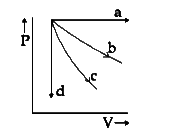What are isobaric, isochoric, isothermal and adiabatic processes?Solution in Bengali
Step by step video & image solution for What are isobaric, isochoric, isothermal and adiabatic processes? by Physics experts to help you in doubts & scoring excellent marks in Class 11 exams.
Updated on:21/07/2023Topper's Solved these Questions
- FIRST AND SECOND LAW OF THERMODYNAMICSBOOK - CHHAYA PUBLICATIONCHAPTER - FIRST AND SECOND LAW OF THERMODYNAMICSEXERCISE - Higher Order Thinking Skill (HOTS) Questions
35 Videos
- FIRST AND SECOND LAW OF THERMODYNAMICSBOOK - CHHAYA PUBLICATIONCHAPTER - FIRST AND SECOND LAW OF THERMODYNAMICSEXERCISE - Exercise - Multiple Choice Questions (Mark 1)
31 Videos
- FIRST AND SECOND LAW OF THERMODYNAMICSBOOK - CHHAYA PUBLICATIONCHAPTER - FIRST AND SECOND LAW OF THERMODYNAMICSEXERCISE - CBSE SCANNER
18 Videos
- EXPANSION OF SOLIDS AND LIQUIDSBOOK - CHHAYA PUBLICATIONCHAPTER - EXPANSION OF SOLIDS AND LIQUIDSEXERCISE - CBSE SCANNER
2 Videos
- FRICTION BOOK - CHHAYA PUBLICATIONCHAPTER - FRICTION EXERCISE - CBSE SCANNER
7 Videos
Similar Questions
Water falls from the top to the bottom of a waterfall. Why does the temperature at the bottom become slightly higher?
View SolutionWhen a bullet of 6g mass hits a target at a speed of 400m⋅s−1, 70% of its energy is converted into heat. The value of heat generated is
View SolutionWrite the second law of thermodynamics.
View SolutionShow that the coefficient of superficial expansion of a rectangular sheet of the solid is twice its coefficient of linear expansion.
View SolutionDefine angle of friction. The inclination θ of a rough plane is increased gradually. The ply on the plane just comes into motion when inclination θ becomes 30∘. Find coefficient of friction. If the inclination is further increased to 45∘ then find acceleration of the body along the plane. (g = 10 m.s−2)
View SolutionPV = n RT holds good for A) Isobaric process B) Isochoric process C) Isothermal process D) Adiabatic process
View SolutionWrite the mathmatical expression of the First Law of Thermodynamics for the following processes : (1) Isothermal (2) Adiabatic
(3) Isochoric (4) Isobaric
View SolutionThe given diagram shows four processes i.e., isochoric, isobaric, isothermal and adiabatic. The correct assignment of the processes, in the same order is given by:
View SolutionAn ideal gas undergoes four processes: isochoric, isobaric, isothermal and adiabatic. In which process is (i) the change in internal energy zero?
View SolutionAn ideal gas undergoes four processes: isochoric, isobaric, isothermal and adiabatic. In which process is (ii) the work done zero?
View SolutionAn ideal gas undergoes four processes: isochoric, isobaric, isothermal and adiabatic. In which process is (iii) the heat exchange zero?
View SolutionDefine the following terms: (a) Isothermal process (b) adiabatic process (c) isobaric proces (d) isochoric process.
View SolutionDefine the following terms: (a) Isothermal process (b) adiabatic process (c) isobaric proces (d) isochoric process.
View SolutionIsochoric, Isobaric, Isothermal and Adiabatic Process | General polytropic process | Chamber with partition questions | Questions on graphs
View SolutionThe given diagrams shows four processes i.e., isochoric , isobaric , isothermal and adiabatic. The correct assignment of the processes in the same order is given by:

View Solution
